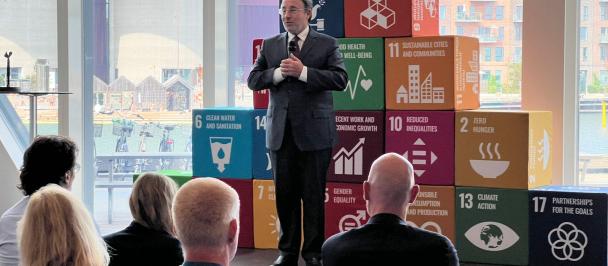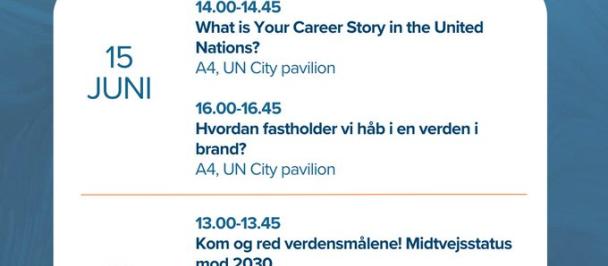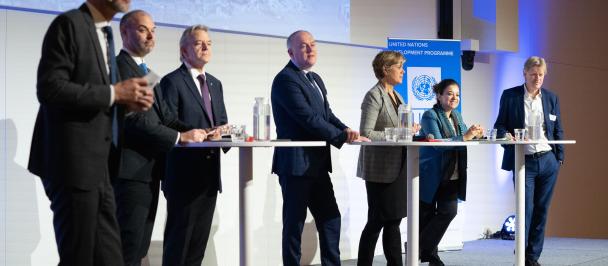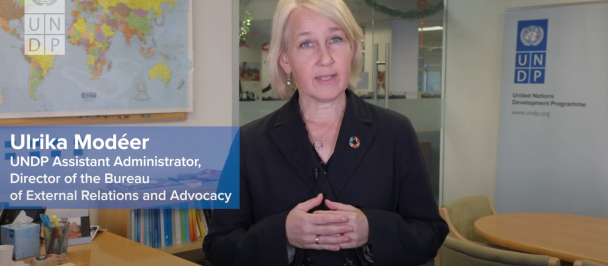UNDP calls for a Debt-Poverty Pause to mitigate poverty until the multilateral system addresses debt restructuring at speed and scale
165 million people fell into poverty between 2020 to 2023 as debt servicing crowded out social protection, health and education expenditures
14. juli 2023

New York - Over the past three years, poverty rates in poor countries have surged, with the number of additional individuals living on less than $3.65-a-day reaching 165 million by 2023 according to a new policy brief from the United Nations Development Programme (UNDP), titled “The Human Cost of Inaction: Poverty, Social Protection and Debt Servicing, 2020–2023”. The entirety of these additional poor live in low - and lower-middle-income economies, with the poorest 20% in low-income countries suffering the most with their incomes still below the pre-pandemic levels in 2023. In response to this crisis, the UNDP is calling for adaptive social protection and a “Debt-Poverty Pause” to redirect debt repayments toward critical social expenditures.
Achim Steiner, UNDP Administrator, said: “Countries that could invest in safety nets over the last three years have prevented a significant number of people from falling into poverty. In highly indebted countries, there is a correlation between high levels of debt, insufficient social spending, and an alarming increase in poverty rates. Today, 46 countries pay more than 10 percent of their general government revenue on net interest payments. Debt servicing is making it increasingly harder for countries to support their populations through investments in health, education and social protection.”
“There is a human cost of inaction in not restructuring developing countries’ sovereign debt. We need new mechanisms to anticipate and absorb shocks and make the financial architecture work for the most vulnerable” he added.
Over the past decade, debt service payments have steadily been consuming a larger and larger share of public revenue and expenditure in developing economies. As an example, compared to the average high-income country, the latest data suggests that the average low-income country devotes between double and triple the share of revenue or expenditure to servicing interest payments.
On average, low-income countries are likely to allocate more than twice as much funding to servicing net interest payments as they do to social assistance, and 1.4 times more than to healthcare. Debt servicing accounts for 60% of education expenditures in these nations.
UNDP Chief economist George Gray Molina said: “As interest rates peak in 2023, the international financial system continues to stress the need for ‘temporal and targeted relief to the poor’ affected by the crises. However, highly indebted developing countries have run out of fiscal space for continued debt-financing – which translates into a squeeze on social protection and other expenditures. In the absence of credible debt relief, these countries are not able to deliver this ‘temporal and targeted’ support.”
The brief – that builds on the findings of the UN Crisis Response Group report: A World of Debt, a growing burden to global prosperity” - calls, in the short-run, for a “Debt-Poverty Pause” to redirect debt repayment towards financing social expenditures and countering the effects of macroeconomic shocks.
“This systemic addition to the international financial architecture should be triggered automatically, to stabilize free-falls when exogenous shocks shrink developing countries’ fiscal space, bloat their debt servicing and throw households into poverty. This is the beginning of a new adaptive social protection architecture to prepare for a future prone to shocks,” said Molina.
The solution is not out of reach for the multilateral system. According to the policy brief’s calculations, it would cost little more than US$14 billion, which is approximately 0.009 percent of the global Gross Domestic Product in 2022, to mitigate the current surge of poverty and lift out of poverty the 165 million people living on less than $3.65 a day. This is little less, on average, than four percent of low- and middle-income countries’ public external debt service payments in 2022 – which reached $370bn.

 Locations
Locations


